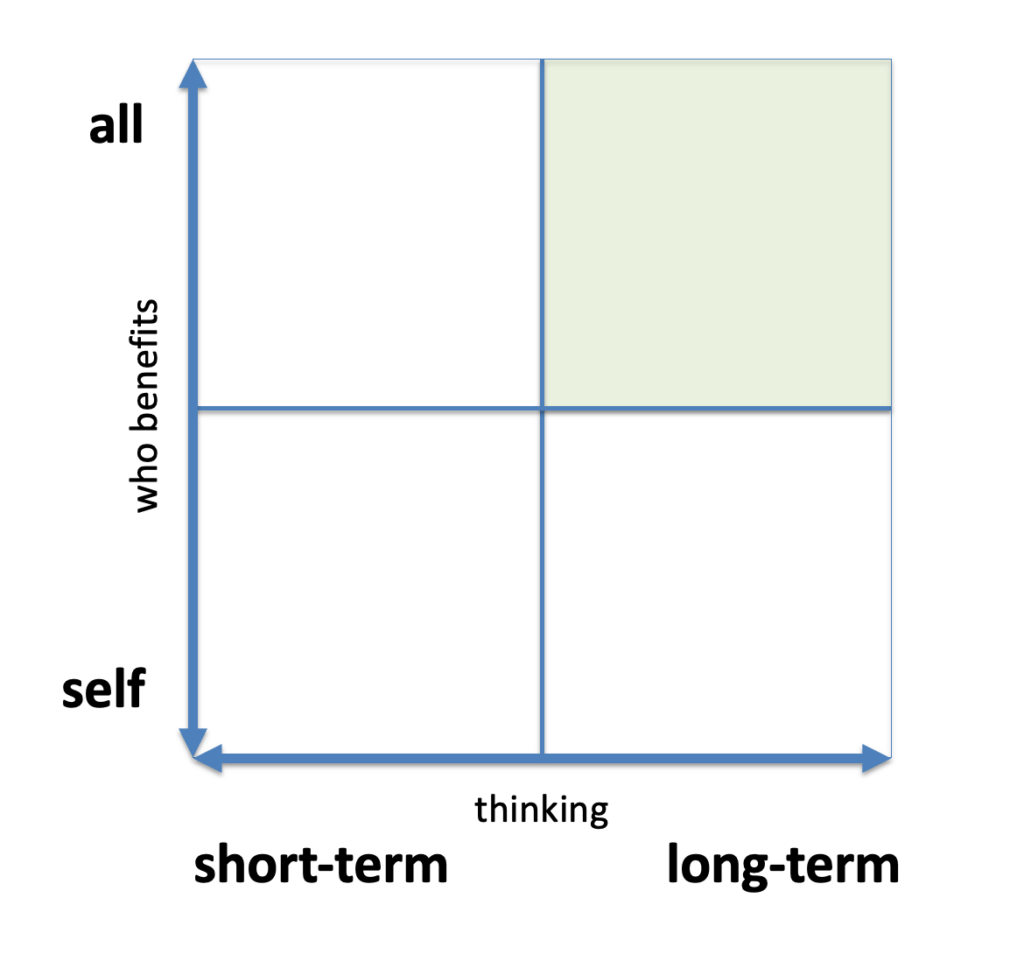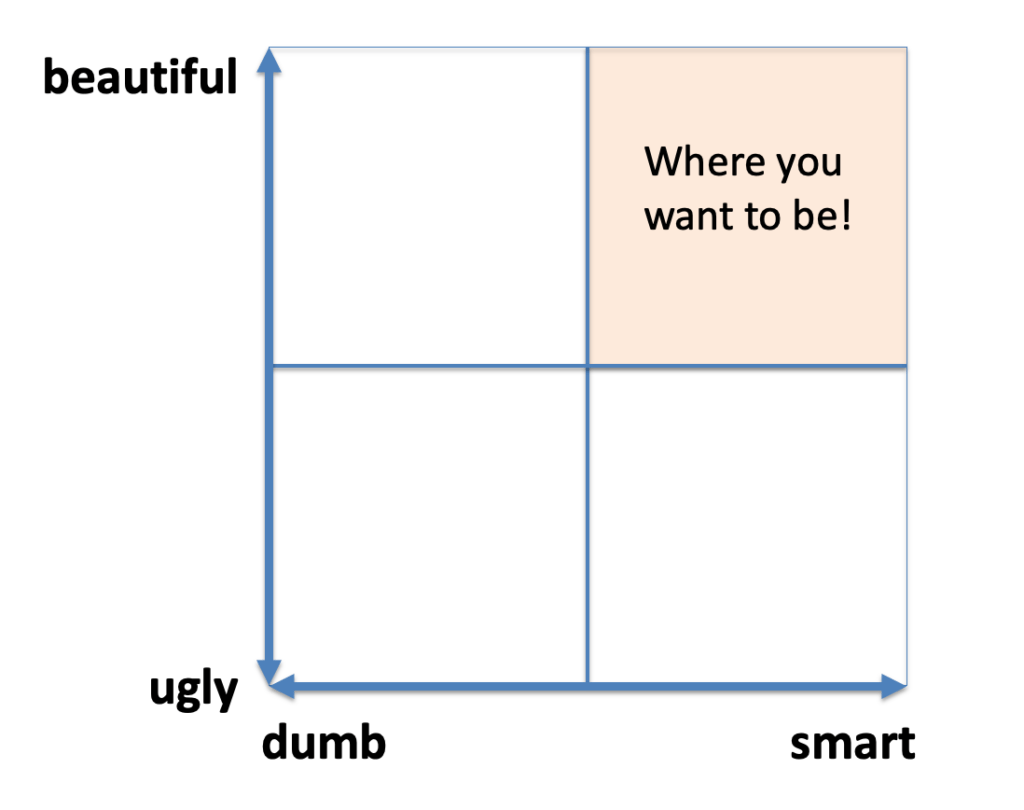
In the world of tech/finance that I came from, every organization must have its own quadrant chart. (It’s also called the 2×2 matrix.)
Basically, a quadrant chart serves to show how your organization is different from and better than all the other offerings in the market. The right place to find yourself is in the upper right-hand corner.
In short, a quadrant chart is a thinking tool. In Wellville’s case, we use our basic quadrant chart not so much to describe ourselves, but to explore the mindset shift we want to foster.
Our two axes are “short-term thinking” vs. “long-term thinking,” and “benefits just me” vs. “benefits all,” otherwise called “self-interest” vs. “shared interest.”
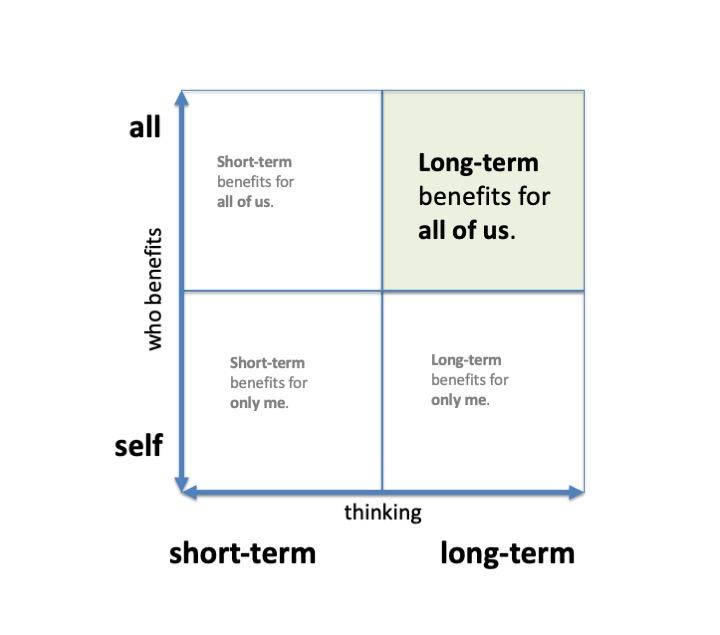
You can make it much more interesting by filling it out with examples. We won’t name names, but you can. For now, here are some anonymous characters, designed to offend/provoke thought.
At the lower left, there’s “all me, right now! “ For example, it’s a person addicted to some harmful behavior or substance, regardless of how they acquired that condition. Their vision is constricted: They can’t see the past; they are caught in the unrelenting present, craving relief that never comes and unmoored from whatever past happiness and human connections they had. Nor can they see the future; they are caught in a short-sighted, constrained hole they cannot escape. And they can’t look to the side either – to see the people they loved and the people who need them; it’s all swallowed up in that persistent cycle of craving and seductive, temporary relief.
In the upper left corner, there’s a benevolent billionaire (BB). He gives the local food bank $1000 in cash — so benevolent he doesn’t even take the tax deduction! But the money does no good; it helps the BB feel generous, but it makes no real change for the ultimate beneficiary – an injured and now jobless worker who – moored in the lower-left quadrant – turns the food bank’s offerings into cash to buy drugs for short-term relief of his back pain.
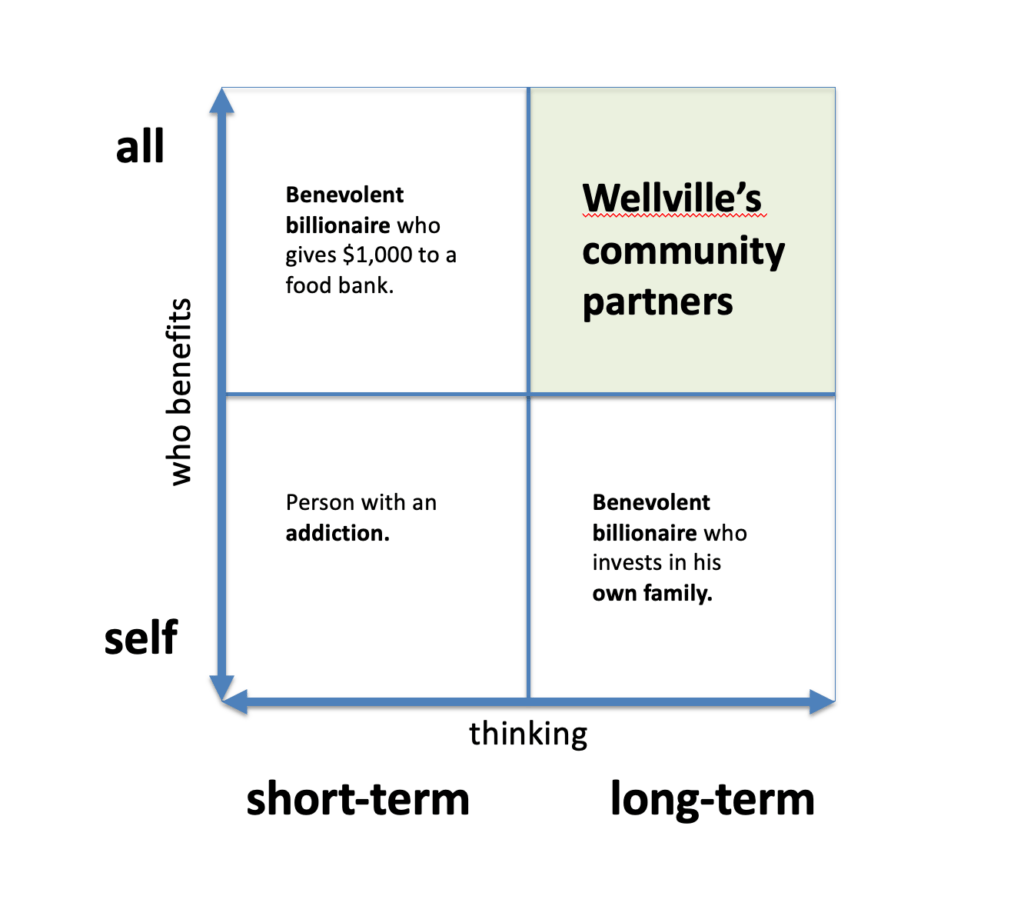
The BB, however, does sometimes think long-term, especially about himself and his family. He pays expensive school fees for his kids and endows a STEM program (in his own name) at their college to ensure that his kids can enjoy an elite education in the company of other privileged kids. He also funds a wing (in his wife’s name) at the local hospital, to ensure he and his family get the very best health care.
And finally, in the upper right-hand corner are the long-term, shared-interest thinkers we at Wellville aim to challenge, inspire and even nudge into being. Our community partners are looking both upstream to find the root causes of today’s problems, and forward to what they can build both to fix those problems and ensure the welfare of the next generation. These individuals want to work and deliver across silos. They knit the social fabric together, collaborating with others.
Examples from Wellville communities abound. In Muskegon County, MI, a large group of Muskegon-area nonprofit organizations came together to bid on (and win) a Build Health Challenge grant of $300,000 for the Muskegon Heights Economic Opportunity Initiative. Among others, that grant will fund workforce development and support for entrepreneurs. Much of the activity will happen at the newly named West Michigan Blueprint Hub, a community center plus manufacturing project facility in Muskegon Heights. It took a while to be named because backbone organization Access Health had the wisdom to wait for the community to name it. That community includes local Heights residents along with some close-to-the-ground organizations such as Hackley Community Care, Pathfinders of Muskegon, Goodwill Industries of West Michigan, and West Michigan Works! Now the community is coming together for an even larger lift: Funding and building the Hub itself. Stay tuned!
And then there’s Muskegon’s HowYOUBirth doula collaborative, a group of local residents that organizes and trains local community members to become doulas to provide non-medical care and support to birthing parents of color – a service now reimbursed by Medicaid for eligible parents. HowYOUBirth also helps its trained doulas with life-literacy (as opposed to health-literacy) details: how to get reimbursed by Medicaid, how to find clients, how to get certified, how to buy the right insurance coverage… This should have huge positive impacts on both parents and children in the years to come.
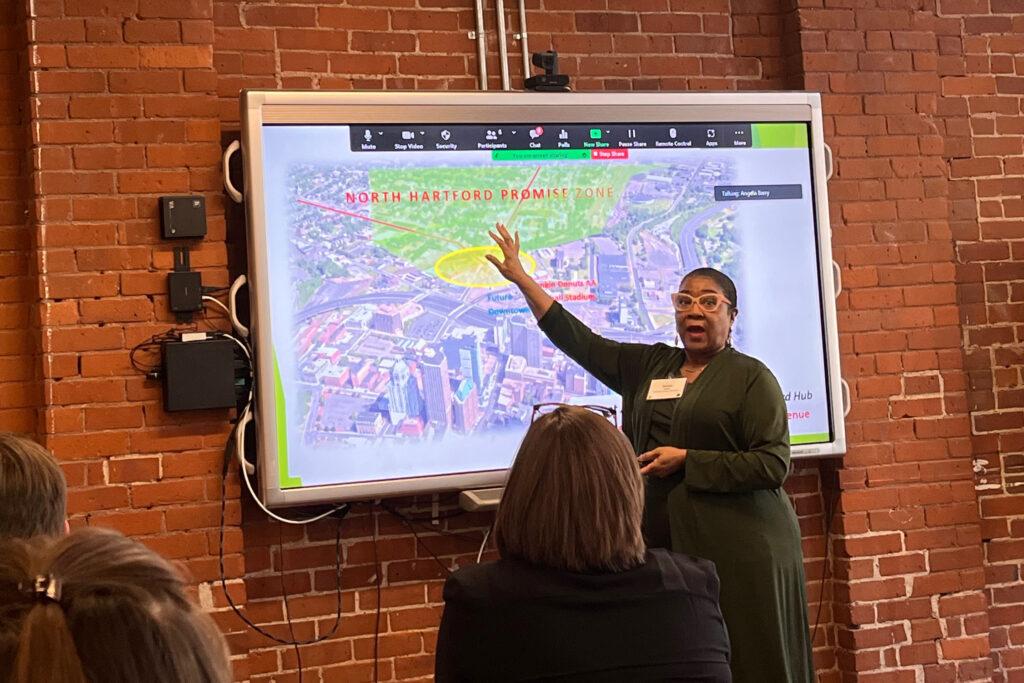
In North Hartford, CT, members of the North Hartford Triple Aim Collaborative (NHTAC), are working together to realize the community’s vision for a healthier and more vibrant North Hartford. The NHTAC is made up of municipal leaders, healthcare executives, nonprofit leaders, funders, and community advocates. One of its featured projects is to support a resident-led organization, the Community Action Task Force (CATF), as it works to open the Healthy Hartford Hub, a group of health-promoting outlets and activities centered around a full-service grocery store that will serve neighborhoods currently without access to fresh food.
The goal of all these efforts is to build something sustainable – not to address a problem, but to fix it with some persistent resource that prevents a bad outcome in the first place. It reflects the thinking along the horizontal access of the quadrant chart.
Now fill out your own empty chart – and make as many different copies as you want!
This blank quadrant chart is my favorite, because it provokes thinking rather than supplying easy answers. You can make it meaningful for yourself…and also share it with others, time and time again!
